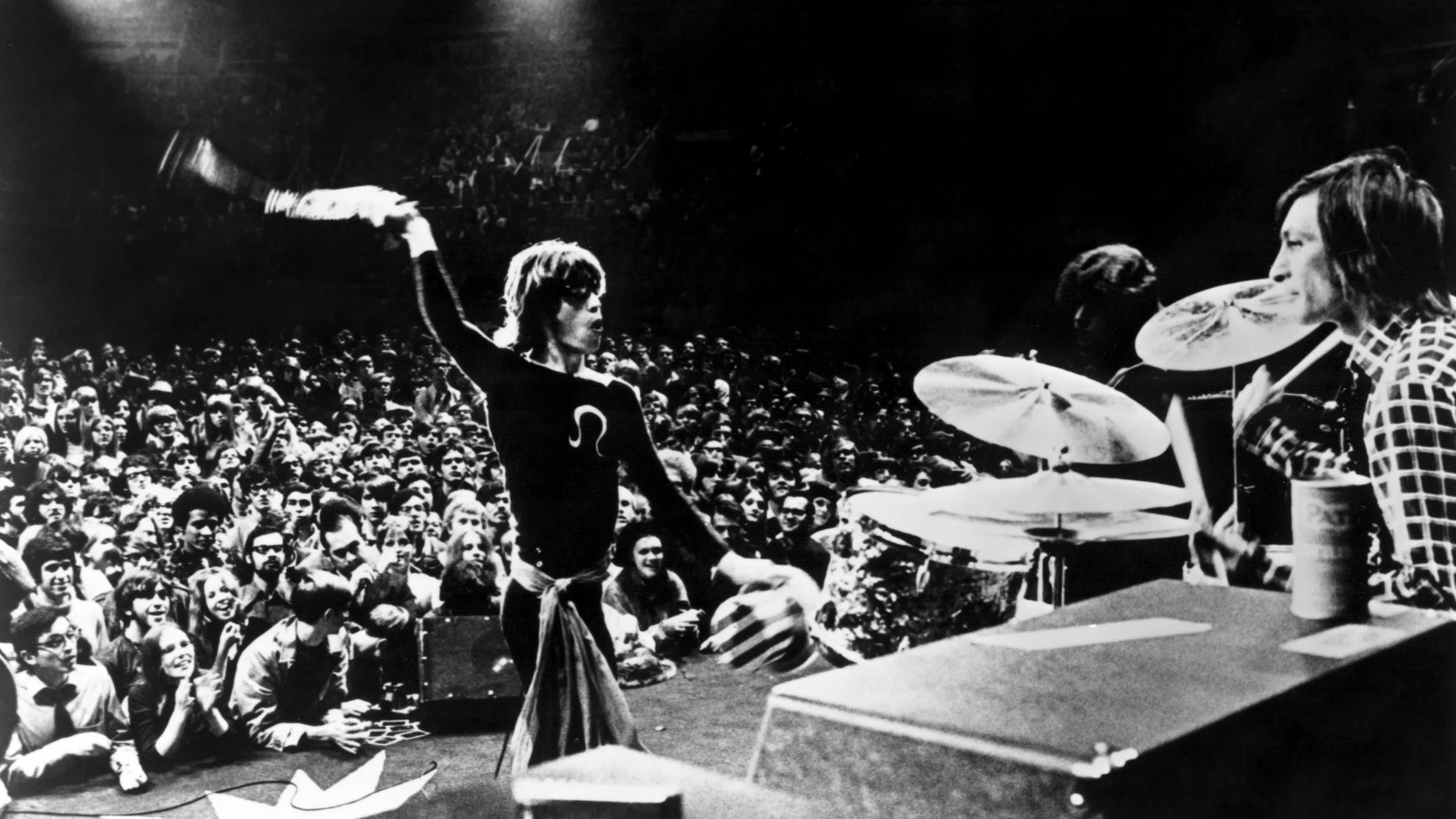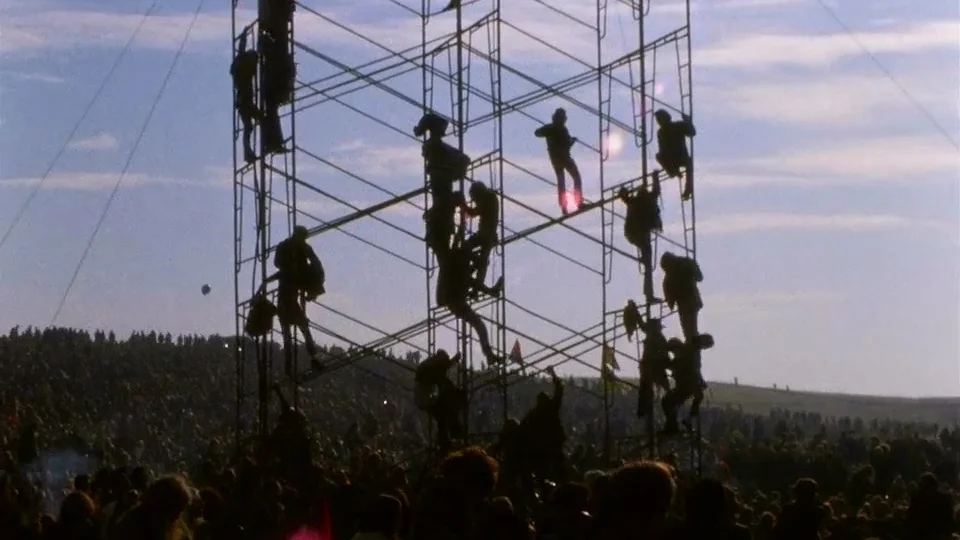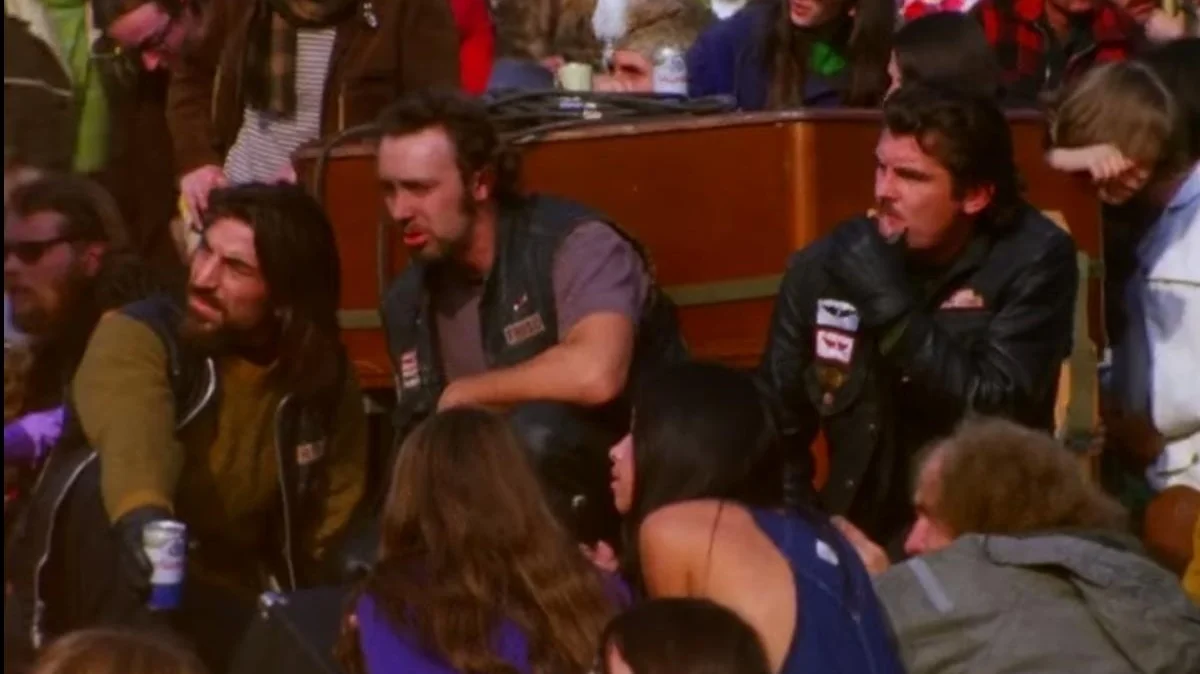Goodbye to Love: Gimme Shelter (1970)
If 1967 was the “Summer of Love”, 1969 was the death of it and all that it meant. It was the end of an era in many ways. There’s a definitive line where this all starts, and it can be signified by B.C. and A.C: Before Charles and After Charles. The savage murders committed by Charles Manson and his followers on August 8th shocked the world but was especially terrifying to those who lived in Los Angeles. There was a pall over Southern California in 1969 that was more than just smog, and if you look real close, it’s still there to this day.
Sure, there were last gasps from the counterculture trying to desperately to hang on to that whole peace and love thing. In August of 1969 (A.C.) more than 400,000 people made a pilgrimage to Yasgur’s Farm in upstate New York for a music festival billed as “3 Days of Peace & Music”. Everyone from Crosby, Stills, Nash & Young and Jimi Hendrix to The Band and The Who played Woodstock, which was held on August 15th. It was a big deal and, certainly, a seminal moment in music history. The festival was the pinnacle of that moment and perhaps, maybe, a way to move forward after the hideousness of the murders that had happened just days before. That did not last long though. A few months later, on December 6, 1969, an incident occurred that was seen as a turning point in America. An incident that just happened to be captured on film.
Gimme Shelter is a documentary by David and Robert Maysles (Grey Gardens, 1975). The brothers were filming The Rolling Stones during the kickoff show of their 1969 US tour at Madison Square Garden (MSG). Whatever the brothers intended the film to be initially, that all changed once they asked the Stones if they could film the rest of their short tour.
Gimme Shelter documents the wheeling, dealing, and scrambling it took to put together the free show planned by The Grateful Dead in conjunction with The Rolling Stones. The film begins like most band documentaries, showing the Stones playing live at MSG. We see them later recording a couple of songs in Muscle Shoals, Alabama including “Wild Horses”. We also get footage of Mick Jagger and the band watching the footage from the last show they played on the tour. They sometimes look upset and shaken. As the movie progresses, we get a front row seat to the actions that led up to a young man’s death during the Stones set at that free show in California.
We’re a fly on the wall to all the meetings and calls that went into organizing the free show. We are shown that the concert seemed to be ill-fated right from the start. It was initially set for a location in San Jose but that fell through. Then it was scheduled at Golden Gate Park in San Francisco but that, too, fell through. It was moved to Sears Point (now Sonoma Raceway) but then, you guessed it, fell through. The reasons no one wanted to put on the show were mainly logistical. Tens of thousands of people showing up to a free day of music would be a nightmare even on the best of days. Eventually, the owner of Altamont Speedway said the concert could happen there. This was two days before the event was supposed to take place. Two days. There were a few voices of concern here and there, but they went forward with the show anyway.
The concert itself was a recipe for disaster and a disaster it was, with the Maysles’ crew filming nearly every single second of it. 300,000+ people drove out to the Altamont Speedway in Northern California, over an hour east of San Francisco. We see mile after mile of cars abandoned on the highway leading up to the Speedway. The stage (if you could even call it that), originally designed when the show was taking place at Sears Point, could not be rebuilt in time so the crews put up a new stage that was barely a few feet off the ground. Add to that, the crush of people on the slopes leading down to the stage, throw in every kind of narcotic you can think of, wash those down with alcohol, add in some heat, and top it all off with a bunch of Hells Angels hired as a kind of security to “sit on the stage to make sure no one in the crowd gets up there,” reportedly paid in $500 worth of beer. Drunk/drugged crowd on one side, drunk/drugged Hells Angels, armed with pool cues, on the other. Cue the music and watch Altamont descend into bedlam.
It’s clear the festival has already delved into disorder before the first band plays. The film shows a couple of songs from The Flying Burrito Brothers and Jefferson Airplane. It’s difficult to focus, both for the bands and for us, because of the chaos happening just a few feet in front of them. Fights are happening everywhere. During Jefferson Airplane’s set, Marty Balin jumps off the stage to try and stop a fight between some Angels and the crowd only to be knocked out by one of the gang members. Mick Jagger, himself, actually gets punched in the face after arriving by helicopter. The Grateful Dead, after hearing about the madness in front of the stage and what had happened to Balin, said a big old nope and left the venue before they were scheduled to play. By the time the Stones went on, people were hot, tired, fed-up, under the influence, and agitated.
The Stones get about three songs in before the tragedy happened right before our eyes. From the crowd, Meredith Hunter, along with several other people, appear to be trying to rush the stage. Hunter and others were hit by Angels in order to get them back away from the stage. In the footage, we see what appears to be a gun being pulled by Hunter. Next, we see Angels member, Alan Passaro, moving in on Hunter. Hunter was stabbed at least 6 times and died. It’s not an easy thing to watch.
As mentioned earlier, Gimme Shelter shows the band, leading up to and after that day at Altamont. It’s clear they are listening to and watching footage of the concert and death of Hunter as well as listening to various people discuss the aftermath, including some members of the Hells Angels organization. The band is visibly distraught by the events. What started out an idea to give people a free show between the Grateful Dead and Rolling Stones turned into a clusterfuck of bad decisions on everyone’s part. It was by chance that the Maysles and crew just happened to be there to capture it all. This film stands a document to the end of 1960s, the end of an era, the end to the hippy culture and all that came with it.
Gimme Shelter is available for purchase from the Criterion Collection and currently streaming on the Criterion Channel.
















